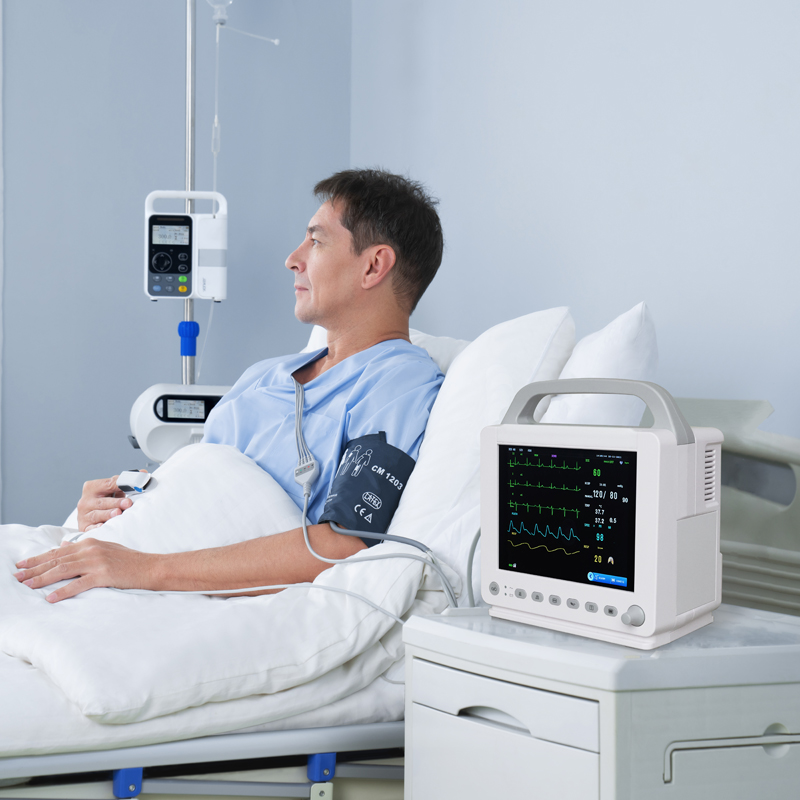In the high-stakes environment of modern medicine, patient monitoring systems serve as tireless sentinels, providing continuous vital sign surveillance that forms the foundation of clinical decision-making. These sophisticated devices have evolved from simple analog displays to comprehensive digital ecosystems, revolutionizing how healthcare professionals detect and respond to physiological changes.
Historical Evolution
The first dedicated patient monitor emerged in 1906 when Einthoven's string galvanometer enabled basic ECG monitoring. The 1960s saw the advent of oscilloscopic displays for cardiac monitoring in ICUs. Modern systems integrate multiple parameters through digital signal processing - a far cry from the single-channel devices of the 1960s that required constant nurse observation.
Core Parameters Monitored
- Cardiac Surveillance
- ECG: Measures electrical heart activity through 3-12 leads
- ST-segment analysis detects myocardial ischemia
- Arrhythmia detection algorithms identify 30+ abnormal rhythms
- Oxygenation Status
- Pulse oximetry (SpO₂): Uses photoplethysmography with 660/940nm LEDs
- Masimo's Signal Extraction Technology boosts accuracy during motion
- Hemodynamic Monitoring
- Non-invasive BP (NIBP): Oscillometric method with dynamic artery compression
- Invasive arterial lines provide beat-to-beat pressure waveforms
- Advanced Parameters
- EtCO₂: Infrared spectroscopy for end-tidal carbon dioxide
- ICP monitoring via ventricular catheters or fiberoptic sensors
- Bispectral Index (BIS) for anesthesia depth monitoring
Clinical Applications
- ICU: Multi-parameter systems like Philips IntelliVue MX900 track up to 12 parameters simultaneously
- OR: Compact monitors like GE Carescape B650 integrate with anesthesia machines
- Wearables: Zoll LifeVest provides mobile cardiac monitoring with 98% shock efficacy
Technical Challenges
- Motion artifact reduction in SpO₂ monitoring
- ECG lead-off detection algorithms
- Multi-parameter fusion for early warning scores (e.g., MEWS, NEWS)
- Cybersecurity in networked systems (FDA guidelines for medical IoT)
Future Directions
- AI-powered predictive analytics (e.g., sepsis prediction 6hrs earlier)
- Flexible epidermal electronics for neonatal monitoring
- 5G-enabled remote ICU solutions demonstrated 30% mortality reduction in trials
- Self-sanitizing surfaces using photocatalytic nanomaterials
Recent advancements include contactless radar-based vital sign monitoring (demonstrated 94% accuracy in heart rate detection) and laser speckle contrast imaging for microvascular perfusion assessment. As monitoring technology converges with AI and nanotechnology, we're entering an era of predictive rather than reactive patient care.

At Yonkermed, we pride ourselves on providing the best customer service. If there is a specific topic that you are interested in, would like to learn more about, or read about, please feel free to contact us!
If you would like to know the author, please click here
If you would like to contact us, please click here
Sincerely,
The Yonkermed Team
infoyonkermed@yonker.cn
https://www.yonkermed.com/
Post time: May-14-2025

